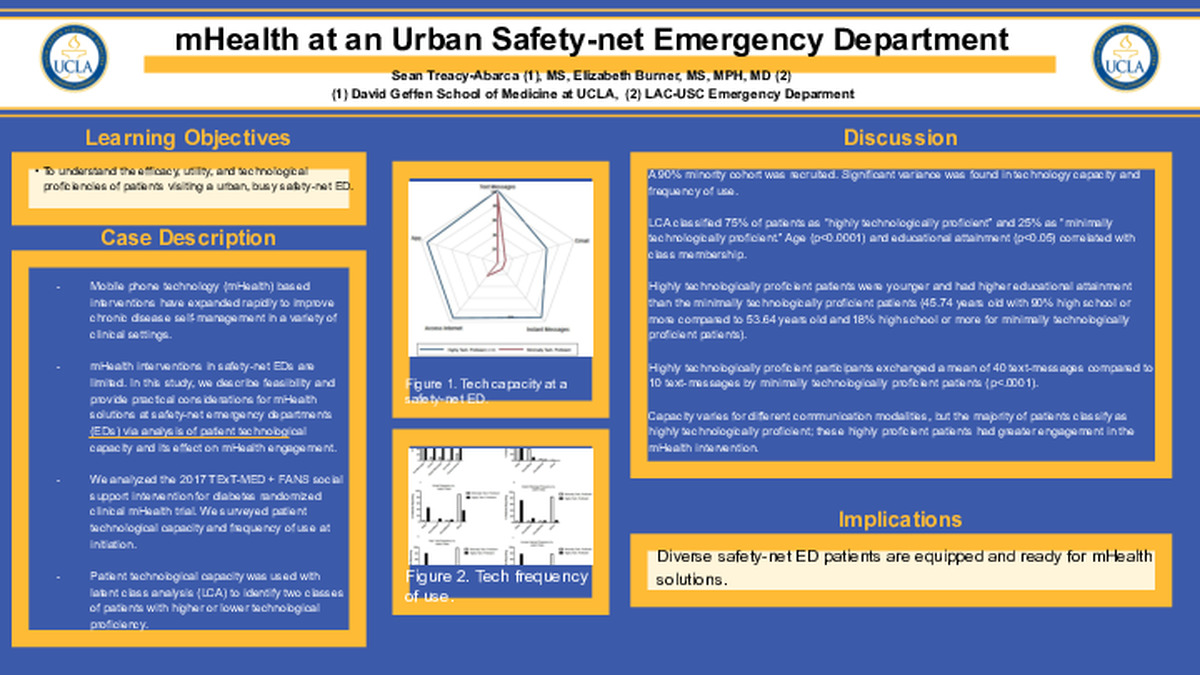-
Author
Sean Treacy-Abarca -
Co-author
Elizabeth Burner, MD
-
Title
“Age and educational attainment predicts engagement in an mHealth intervention conducted at a safety-net emergency department”
-
Abstract
Study Objectives: Mobile phone technology (mHealth) based interventions have expanded rapidly to improve chronic disease self-management in a variety of clinical settings. mHealth interventions in safety-net EDs are limited. In this study, we describe feasibility and provide practical considerations for mHealth solutions at safety-net emergency departments (EDs) via analysis of patient technological capacity and its effect on mHealth engagement.
Methods: We analyzed the 2017 TExT-MED + FANS social support intervention for diabetes randomized clinical mHealth trial. From a safety-net ED, 166 patients who used text messages, owned a mobile phone, and had a Hemoglobin A1C (Hba1c) >8.5% were enrolled. A mHealth platform was provided to patients and supporters of patients were randomized to receive a mailed copy or a mHealth based curriculum designed to improve diabetes support. We surveyed patient technological capacity and frequency of use at initiation. Patient technological capacity was used with latent class analysis (LCA) to identify two classes of patients with higher or lower technological proficiency. We compared demographic characteristics between classes to identify predictors of class membership. Study engagement between classes was assessed via comparison of mean text-messages exchanged, loss to follow-up rates, and request for early termination.
Results: A 90% minority cohort was recruited. Significant variance was found in technology capacity and frequency of use. LCA classified 75% of patients as “highly technologically proficient” and 25% as “minimally technologically proficient.” Age (p<0.0001) and educational attainment (p<0.05) correlated with class membership. Highly technologically proficient patients were younger and had higher educational attainment than the minimally technologically proficient patients (45.74 years old with 90% high school or more compared to 53.64 years old and 18% high school or more for minimally technologically proficient patients). Highly technologically proficient participants exchanged a mean of 40 text-messages compared to 10 text-messages by minimally technologically proficient patients (p<.0001).
Conclusions: Capacity varies for different communication modalities, but the majority of patients classify as highly technologically proficient; these highly proficient patients had greater engagement in the mHealth intervention. Diverse safety-net ED patients are equipped and ready for mHealth solutions.
-
College
AAC
-
Zoom
-
PDF

